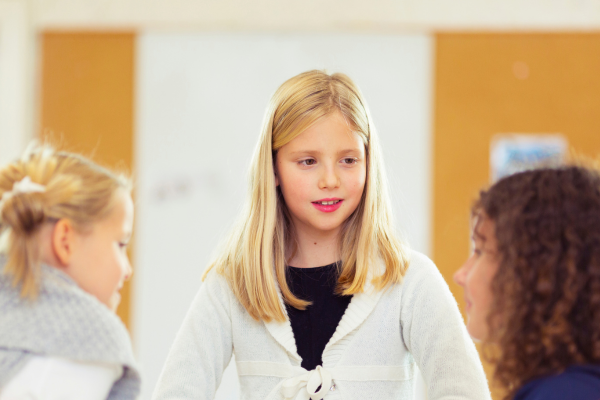Learning activities to produce responsible digital communicators

The Using debate to build critical thinking and communication skills online course first ran on EU Academy between January and February 2025, and is still available as a self-paced course.
Participants explored how to design education that fosters critical thinking, argumentation and communication through the use of debate. This includes helping pupils to be able to express and defend ideas respectfully, evaluate different perspectives and build well-reasoned arguments, while also reflecting on the social and historical context of debate practices.
The learning activities linked below offer valuable ideas and inspiration to teachers who want to integrate debate into their classroom as a dynamic and inclusive pedagogical approach.
The learning activities have been reviewed and curated by the course coordinator. A big thank you to the authors:
Sonja Radović, María Yedra Martínez Expósito, Lars Tristram and Sofia Reis.
The inclusion of foreign students
Age category: 11–13 years
Max Fischer / Pexels.com
Pupils aged 11–14 years were tasked with discussing the inclusion of foreign students in the education system. Through the debate, students explored the challenges, benefits and strategies for integrating foreign students, developing critical thinking, argumentation and social skills, while connecting with themes of tolerance, diversity and empathy. This activity fit into the curriculum by fostering essential social-emotional skills such as empathy, critical thinking and communication.
Author: Sonja Radović
Download the activity ‘The inclusion of foreign students’
Women in science: the great debate
Age category: Lower secondary
Polina Tankilevitch / Pexels.com
In this interdisciplinary activity for the International Day of Women and Girls in Science. Pupils researched pioneering female scientists and linked their discoveries to the Periodic Table. Through structured debates, they developed research, critical thinking, argumentation and digital literacy skills, while reflecting on historical contributions and ongoing challenges for women in STEM. The project integrated chemistry, English and technology, and fostered scientific literacy, public speaking and gender equity awareness.
Authors: María Yedra Martínez Expósito
Download the activity ‘Women in science: the great debate’
Debating changes in the media landscape
Age category:16–18 years
Katerina Holmes / Pexels.com
In this 90-minute English lesson for graduating secondary pupils (aged 16–18), learners explored changes in the media landscape through structured classroom debates. The activity fostered speaking competence and critical engagement with current issues like artificial intelligence and misinformation. Pupils were encouraged to formulate their own debate questions or select from teacher-provided prompts. They worked in groups to research topics, prepare arguments and engage in debates using a simplified format with an opening statement, open discussions and then closing statements. The teacher guided pupils through warm-up tasks, group preparation and post-debate reflection. Assessment focused on research quality, argumentation, feedback and a written reflection task.
Author: Lars Tristram
Download the activity ‘Debating changes in the media landscape’
Debate as an interdisciplinary tool
Age category: 18+ years
fauxels / Pexels.com
This professional development session engaged 15 secondary school teachers in a structured debate activity to explore its interdisciplinary potential. Using scientific revolutions as debate topics, teachers experienced how debate can extend beyond language subjects into science and other disciplines. Participants worked in teams, followed a formal debate structure and developed skills in argumentation, communication and collaboration. The session included activities for reflection and pre/post self-assessment to support personal growth. Inspired by the Erasmus+ ‘+Debate’ project and national initiatives, its goal was to help teachers design and implement debate activities in their own classrooms. It encouraged cross-disciplinary teaching and fostered critical thinking through hands-on experience.
Author: Sofia Reis
Download the activity ‘Debate as an interdisciplinary tool’
Additional information
-
Age from:up to 3
-
Age to:18
-
Education type:Early Childhood Education and CareSchool EducationVocational Education and Training
-
Target audience:TeacherStudent TeacherHead Teacher / PrincipalTeacher Educator
-
Target audience ISCED:Early childhood education (ISCED 0)Primary education (ISCED 1)Lower secondary education (ISCED 2)Upper secondary education (ISCED 3)




